Henry Frederick Swan was the 11th child (and sixth son) of William Swan a tenant farmer of 60 hectares, at West Farm at Walker, Newcastle upon Tyne, and was born on 10th September 1842.
He would become famous throughout the world for his design of the first deep sea oil tanker the Gluckauf. His creation would subsequently create a legacy that would help propel Tyneside shipbuilding to the forefront, worldwide. The idea of carrying oil in bulk, in the hull of a ship, instead of the cumbersome method of barrels, necessarily went through many stages of development before a tanker steamer was evolved.
Swan had joined the Tyneside shipbuilding company of Charles Mitchell in 1858, becoming a Naval Architect, and quickly rose in status to manage the Walker shipyard from 1865, after a three year secondment to build ironclads in Russia.
Oil which was first drilled in Pennsylvania in 1859, was being transported in various forms, but lacked a standard format.
Henry Swan, along with the design staff of other North Eastern shipyards found the problems of transporting petroleum in bulk of particular interest. Swan became a pioneer in overcoming the problems of safely transporting oil in bulk, submitting many patents to the classification society.
They built three small ships at Charles Mitchell’s yard at Low Walker, in the early 1880s with a tank in their hold for service in the Caspian Sea. John McIntyre was the Naval Architect at the Palmers Shipyard at Jarrow three miles downstream, who were also experimenting with a different form of tanker. The first to be built by Palmer’s was the 2,748grt, Vaderland for the Red Star Line of Antwerp, which was built in 1872 as a dual purpose oil tanker/passenger ship. The plan was to carry emigrants westbound and bring oil back to Europe, but it fell foul of the American longshoremen, and in the event was never allowed to carry oil. The yard did not build its first deep sea tanker until 1887.
In 1881 Mitchell’s built a cargo ship for Russian owners, the Massis of 411dwt, with a deep tank amidships, but with no onboard pumping arrangement.
Henry Swan continued to look for a solution and took his embryo design to several eminent naval architects for their opinions, and was told that it would not stand up to the North Atlantic sea states.
However the company pressed ahead to build a ship as a speculative venture, which was laid down on 25th November 1885. W. A. Riedmann, a German shipowner and oil importer, visited the shipyard during construction and placed an order for the ship, whose name Gluckauf, when translated, meant Good Luck, she launched 16th June 1886, ran trials on 10th July. She was powered by 992 I.H.P. machinery, and carried sails as standby equipment. Her first cargo of 2,880 tons was loaded at Philadelphia for Geestemunde. The Gluckauf became part of the Standard Oil fleet in 1888 until eventually wrecked in 1893.
It was not uncommon for shipbuilders to build ships for their own account to keep the shipyard in production, and then sell them when the market improved. Two tankers owned by Henry Swan, coming from the Low Walker berths, were the Lux 1,135/1888 and the Le Coq 3,390/1895. In the early days of transportation of this volatile liquid there were several ships that were lost when they blew up after stranding or due to lack of care and understanding during unloading. Lux was sold to J. M. Lennard, but caught fire and sank in November 1891 near the island of Negraport when on passage from Batoum to Antwerp, while Le Coq was managed by Lane, MacAndrews and broken up in 1932.
As pioneer builders the company were inseparably associated with subsequent developments in this class of ship. Orders for these became a regular occurrence for the yard from small independent owners, the yard producing 39 ships by 1900, Marcus Samuel & Co. being a regular customer.
Distinctive profiles emerged in 1908 when two ships were built, Cheyanne and Delphinula. The ships had two funnels in a fore and aft arrangement. Twin funnels on tankers would not be seen on the river again until the early 1960s when Vickers and Swan, Hunter completed the Serenia and Solen for Shell.
The demand for these ships grew after The Admiralty decided to switch from coal to oil for the fleet, giving lucrative contracts to several companies for its supply including Anglo-Persian Oil, Anglo-American and Eagle Oil. Anglo-Saxon were excluded as the Government were not happy about their German and Dutch trading partners. As the demand for oil progressively rose, so did the size of ships to transport it. Three shipyards on the Tyne received an order from Eagle for 17 of a 19 ship order. When San Fraterno was launched on 22nd February 1913 at Wallsend, she was the largest tanker in the world with a capacity of 15,700 tons.
The Wallsend built Eburna (7,048 dwt) was the first tanker to pass through the Panama Canal on 15th August 1914.
With the onset of World War One, most of the production from the UK’s shipyards concentrated on building dry cargo ships, to replace those lost by Germany’s U-boat campaign. Up to the end of the conflict, of the 179 Tyne built tankers that were in service from the four yards building them on the river, 32 had been sunk amounting to almost a quarter of a million tons deadweight. The shipyards involved were Armstrong Whitworth, Palmers, Tyne Iron and Swan, Hunter & Wigham Richardson.
The Government invoked an Emergency War Shipbuilding Programme to counteract the high volume of ship losses and 25 standard cargo vessels were converted to oil carrying and 6 new tankers saw service. Of the remaining 50 placed on order most were cancelled after the war had ended, and others transferred to the Anglo Saxon and the RFA.
The yards on the river thereafter became synonymous with oil tanker orders, frequently taking the lead in improved class design. In 1916 Tyne yards received the order for the first 7 ships to be ordered by the Anglo-Iranian Oil Co., Armstrong Whitworth building the first, the British Emperor of 5,500dwt.
In 1919 Anglo Saxon took a shareholding in Eagle. Eagle were transporting oil from Mexico which was at the time the world’s third largest producer.
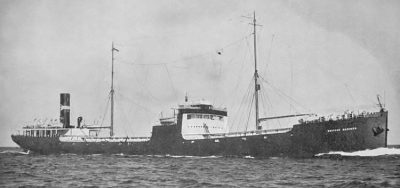
In early October 1921 Palmers launched the first of a new class of 39 Isherwood design 10,772dwt tankers. British Mariner (above) was followed by 14 others from that shipyard, 10 from Swan’s Neptune yard and the rest from other UK yards.
Around this period Anglo Saxon sold 24 of their older ships to Norwegian owners, then took them all back on time charters. Various Norwegian flag companies ordered over 30 ships from UK yards in the 1930s, when the yards were short of work. Several of which were also given long term charters with Anglo Saxon.
The remainder were operated for American oil companies in many cases, as they were finding it expensive to run ships because of unions and laws in the USA. So they gave the Norwegians long term charters. However the ships were not allowed to run on coastwise voyages around the USA.
From the 1920s to 1945 Anglo Saxon (Shell) and the British Tanker Co., favoured certain yards for their new ships. Shell built at Hawthorn Leslie and Swan’s Wallsend Yard, while BTC ordered from Palmers and Swan‘s Neptune shipyard on the river.
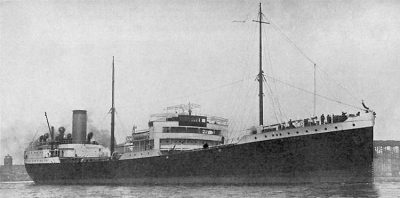
In 1925 Anglo Saxon ordered from Hawthorn Leslie the Bulysses (above), the lead ship in a 10 ship class of 10,000dwt tankers, while across the river at Wallsend in 1931, Cardita was first of the 12 “3 twelves” (12,000 dwt,12 knots and 12 tons of fuel a day). A further 16 were ordered in 1935.
Hawthorn’s followed up with Daphnella in 1938, the lead in a batch of 18 12,000dwt ships.
The slump from the Wall Street Crash in the early 1930s slowed down any major fleet developments, and many ships went into lay up.
As the world began to come out of recession in 1936 British Fame was built at the Neptune yard at Low Walker for the British Tanker Co. She was of 12,250dwt and became the forerunner of a class of 30 near sisters. As the war clouds gathered in 1937 the Admiralty took over 6 of the class on the stocks for the RFA, and they were given a Dale suffix. The Swan built British Influence was the last ship to be completed for BTC before the outbreak of war in May 1939 and fate was to play its hand as she became the first in the fleet to be lost in September when sunk by a U-boat in the Western Approaches. Ships from the British Tanker Co. played their part in many scenarios during the conflict. With the loss of 657 personnel and 44 ships. Anglo Saxon also suffered badly losing 69 ships with a total of 637,000 deadweight.
Of the 284 Tyne built tankers in service during World War II, 125, with capacity of over 1 million tons deadweight, were lost.
Following the war, many importing countries decided that, in their own interests, it would be more economical to refine their imports. This led to the development of deep water berths to accommodate increasingly large tankers. In 1950 construction started at Thames Haven, followed by Isle of Grain, Grangemouth, Fawley, Milford Haven and Bantry Bay.
After the war there was a need to rebuild and replace old and worn out ships. Shipbuiders and owners naval architects were pushing ahead with designs for larger ships, but were limited by the transit depth allowed for the Suez Canal (12,000dwt). A more serious delay was caused by the lack of materials in the aftermath of the war as the nation started to rebuild its devastated infrastructure. The rationing of steel, machinery, electronics etc. continued to be a problem into the mid 1950s. As an example Swan Hunter, like many other shipyards had an order book with a 4 year backlog, as owners booked shipyard berths well in advance of their immediate needs. Such was the demand for tankers that between 1946 and 1960 Hawthorns, Vickers Naval Yard at Walker & Swans on the river built 112 ships.
January 1953 saw the launch of the Helix from Wallsend, the first in a class of over 50 18,900dwt ships for Anglo Saxon and Eagle, 9 of the class coming from yards on the Tyne.
Classification society modifications and development to structural and load line regulations, over the coming decades led to a headlong rush for larger ships. Alongside the increased development of oil terminals and drydocks to repair them.
The list below of the world’s largest tankers, shows how tanker sizes increased:-
- 1952 – Velutina, 28,330dwt, Swan Hunter
- 1956 – Spyros Niarchos, 47,500dwt, Vickers Armstrong, Barrow
- 1961 – Sepia, 66,790dwt, Cammell Laird
- 1965 – British Admiral, 111,274dwt, Vickers, Barrow
- 1966 – Tokyo Maru, 150,000dwt, Japan
- 1968 – Universe Ireland, 331,825dwt, Japan
- 1973 – Globtik Tokyo, 483,662dwt, Japan
- 1975 – Lampas 317,996dwt, Harland & Wolff
- 1976 – Seawise Giant, 564,739dwt, Sumitomo H.I.
- 1966 – A Swan Hunter design for a 1 million dwt tanker, 525 metres long, with 144,000 tons of steel in its construction! The project never materialised.
Due to intense foreign subsidies, and the UK Government’s rationalisation of the UK industry, shipbuilding orders were becoming harder by the end of the 1960s.
In 1964 a survey of the size of tankers trading patterns revealed that 60% of ships of over 90,000 dwt traded between the Gulf and Japan. While the remainder ran on the Gulf to Australia or Gulf to the Philippines or USA.
Ships in the 75,000-90,000dwt catergory tended to be on the near East and Libya to UK and Europe, followed by Gulf to South America and Japan.
60,000 to 75,000dwt tankers were unable to transit the Suez canal fully laden so they operated on the Gulf to Japan and USA routes and on the near east to the continent service.
At the time ships of 50-60,000dwt could pass through Suez fully laden so they serviced the Gulf to Europe route.
Such was the rush to place orders that, by the summer of 1967, 67 owners had 165 tankers on order over 100,000dwt. Of these 3 were on order from Swans 2 from Lithgows and 1 from Harland & Wolff.
From these totals 57 were over 200,000dwt and 6 were over 300,000dwt. 200,000dwt tankers were the largest that could transit Suez in ballast.
However Esso who were in the midst of an expansion programme ordered 4 250,000dwt tankers, 2 with Harland and Wolff and 2 from the Tyne in 1968. These were followed by a further 6 similar sized ships for various owners to be built on the river.
By this time Hawthorn Leslie (now part of the Tyne’s consortium) were concentrating on building LPG tankers, of which they had early experience as far back as Shell’s Agnita of 1931. In 1970 2 LPG tankers of 88,000m3 for Technigaz were built, and by August 1972 these had increased to 230,500m3. These ships were too big to be built at Hebburn, so the plan was to build the hulls at Wallsend and fit them out at the Walker Naval Yard. The whole project was abandoned and the ships were never built.
The British Tanker Co., by now called British Petroleum, had proved to be a prolific source of work for the yards on the river over 70 years. Of their 537 deep sea ships built, 130 came from the berths on the river up to 1992, which represented 24% of the fleet.
In 1973 Swan Hunter and Maritime Fruit of New York, formed a joint Company which was set up as Swan Maritime with a capital of £10 million, of which the builder held on to a quarter of the shares.
The initial order was worth £150 million for 5 260,000dwt, 8 112,000dwt, and 10 32,000dwt tankers and 3 157,000 OBOs with an option for a further £350 million of work! Maritime Fruit being responsible for the sales and charters of these ships.
The cauldron of middle eastern politics, overflowed again that year, with yet another war, leading to a quadrupling of oil prices. This led to economical stagnation and reduced oil consumption as an embargo was placed on the western world. The situation grew worse as more of the world’s shipbuilding tanker orders were now being delivered. This led to a collapse in the dry cargo market and was shortly followed by offshore exploration activities.
This was quickly followed by the Iran-Iraqi war which also curtailed the tanker trade.
Worldwide tankers were being laid up and broken up, with trade taking several years to recover.
Orders for the Swan Maritime ships began to be cancelled, with long lead orders for items such as steel and machinery having to be re-allocated and offered to dry cargo shipowners at discounted prices in order to keep the shipyards in work. But it heralded the decline in orders, leading to shipyards on the river being closed one by one, until the last one closed its gates at Wallsend in 1993, bringing to an end oil tanker production of 107 years amounting to 625 ships, of 6,667,598grt and over 10 million tons deadweight.
The river was also notable for it’s numerous repair yards, with over 20 drydocks available. One of the largest facilities was Smith’s Docks at North Shields, who berthed their first tanker Rocklight in October 1889 and over the next 40 years until 1929, they docked a total of 2,432 tankers.
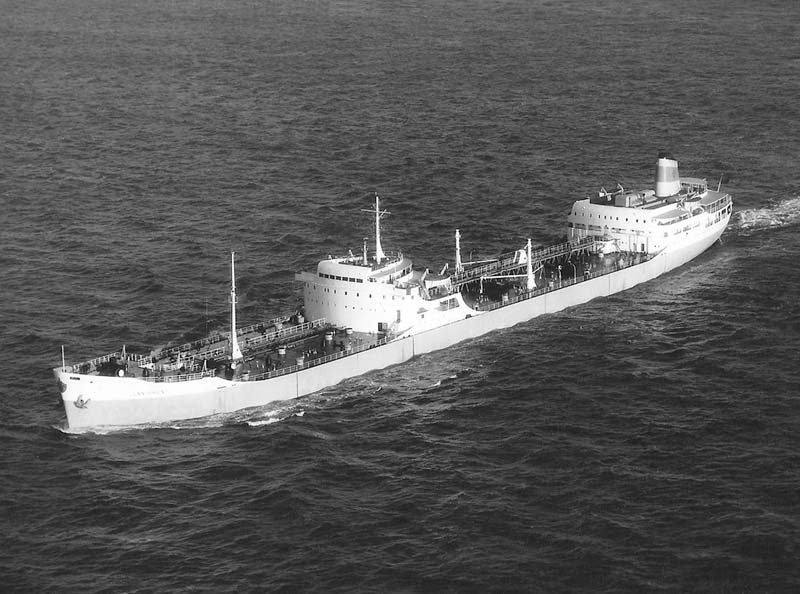
Rarely can a tanker be considered to be pleasing to the eye. However, one in my opinion was the 32,000 dwt Llanishen (above) in her attractive E. T. Radcliffe livery, built in 1958 at Wallsend and chartered to Shell.
The Builders
Armstrong Mitchell
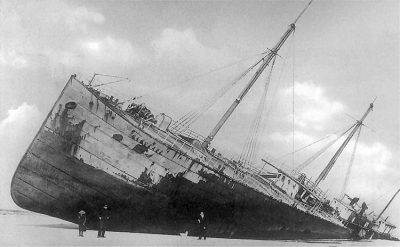
1886 – Gluckauf – 2,307grt. In March 1903 she was wrecked at New York when inward bound from Stettin (above).
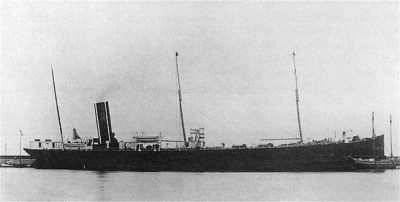
1887 – Willkommen – 3,136grt (above). Built for the same German owners as the Gluckauf, Reidermann. During World War I she was used as a bunkering vessel for U-boats, but was mined in the Jade Estuary in October 1915, beached and abandoned. Photo: Auke Visser
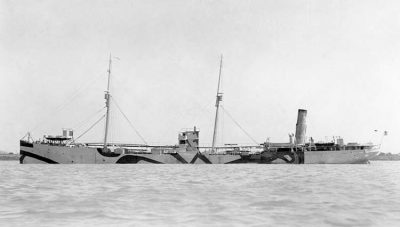
1888 – Gut Heil – 2,690grt. In 1913 she sank after a collision with Samuel’s Bulysses (built in the same shipyard in 1900) in the Mississippi. She was raised and in 1918 requisitioned by the U.S. Navy, renamed USS Sara Thompson (above) and based in the Philippines. She was seized by the Japanese in 1942 and refitted, but sunk by the U.S. submarine Trout in June 1943. Photo: US Navy
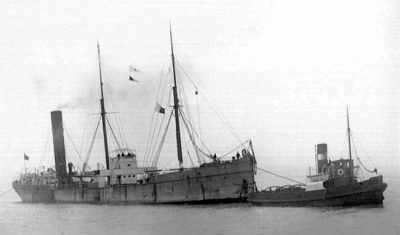
1888 – Russian Prince – 2,176grt (above). One of James Knott’s earliest tankers. By 1927 she was used as a storage hulk in Barcelona and broken up in 1935
1889 – Phosphor – 2,071grt. Managed by J. M. Lennard of Middlesbrough. She was sunk in a collision with the Moerdijk in July 1904.
1889 – Kura – 2,391grt. After passing to several owners, she ended up under the Italian flag as the Persiano in 1924. She was sunk by H.M.S. Tetrach, off Tripoli in April 1941 while carrying petrol for the Italian troops in North Africa.
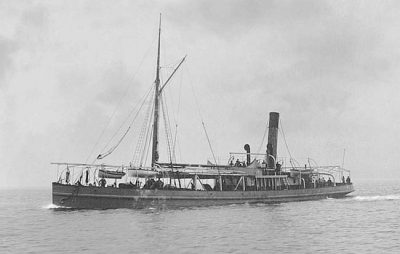
1892 – Le Progres – 449grt (above). A combined tug and coastal tanker for use on the Suez Canal. In October 1942 she was torpedoed and sunk by the Russian submarine M35 in the Black Sea. Photo: Newcastle City Libraries
1893 – James Brand – 3,907grt. In 1923 she was converted into a whale factory ship, but converted back in 1936. The following year she was damaged in an explosion while lying at Willemstad and towed back to Germany for breaking up.
1895 – Nerite – 4,893grt. When launched in October 1895 for Samuel & Co. she was claimed to be the largest tanker afloat with a registered tonnage of 7,000. In March 1902 she burnt out, while lightering the Bulysses in the Suez Canal.
Armstrong Whitworth
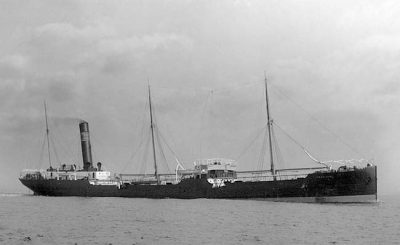
1899 – Saxoleine – 3,741grt (above). One of Hunting’s early tankers. By 1928 she was in Italian hands, but seized by the German Government in 1943. The Russians seized her in 1944 and ran her as the Groznyi until 1965. She was broken up at Hamburg in 1966 as Ruth. Photo: Tyne & Wear Musuems
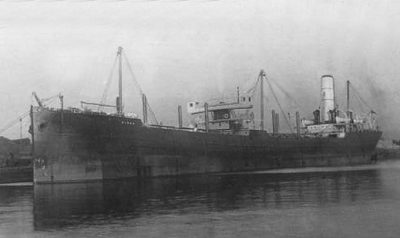
1900 – Pinna – 6,205grt. One of Samuel’s Shell Transport & Trading ships (above). She had 6 different owners under 4 flags. In March 1941 she was scuttled at Puerto Cabello, taken over by the American Navy, and eventually broken up in 1948.
1901 – Kinsman – 4,534grt. Built for Bowrings. By April 1941, under the Italian flag, she was laid up at St. Nazaire. The Germans seized her at Bordeaux in 1943 and she was later scuttled by them off Pauillac.
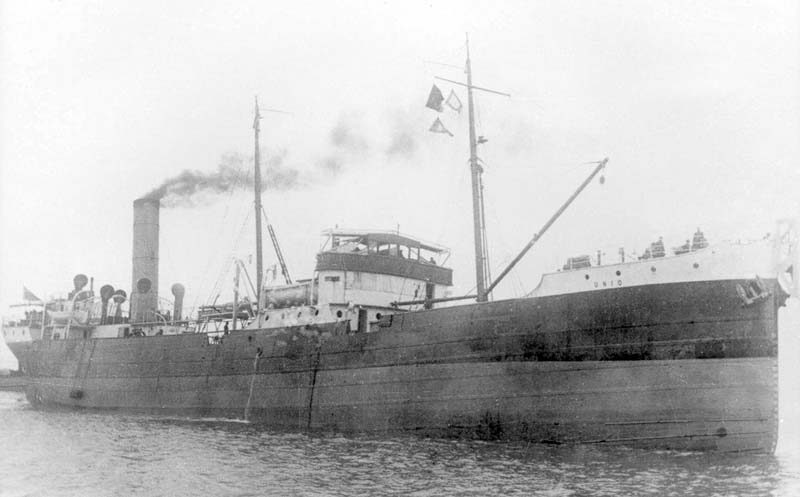
1902 – Twingone – 1,771grt. Originally built for Burmah Oil, she remained in the Far East with Anglo-Saxon Petroleum as Unio (above) until sold to Italians in 1930. She was sunk by a German air attack on Bari in 1943.
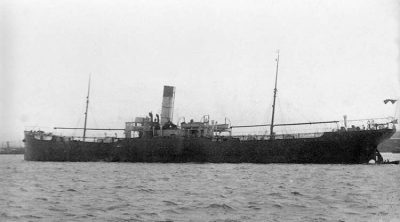
1908 – Carpathian – 4,900grt (above). A Lane and Macandrew ship, she was sold to the Italians in 1930. She sank when Venice was under German control in 1941. She was raised and eventually scuttled there in 1945.

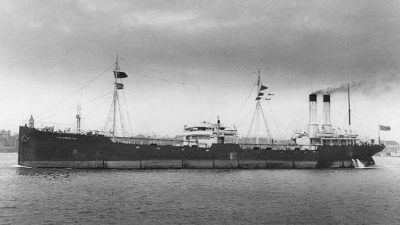
1908 – Buyo Maru – 5,214grt. One of the few twin funnel ships built. In 1917 she was sold to Anglo Saxon and renamed Delphinula (above). By 1936 she was an oil storage hulk at Alexandria and then Gibraltar and broken up at Pasajes in 1947.
1909 – Minhla – 1,300grt. She spent 20 years operating for Burmah Oil, then 10 years around the Bosporus for Turks. Her final years were with Italians, before being bombed and sunk in December 1941 north of Tripoli.
1913 – San Patricio – 12,092grt. One of Eagle Oil’s new fleet of tankers. In 1929 she was converted into a whaling factory ship for Southern Whaling & Sealing Co. In March 1943 she was sunk by U-600 off Newfoundland.
1914 – Sunik – 5,017grt. She was managed by F. Gilbert, London prior to being sold to French operators in 1924. In July 1939 she caught fire and sank following a collision with the Swedish Grangesberg, 25nm south of Fowey.
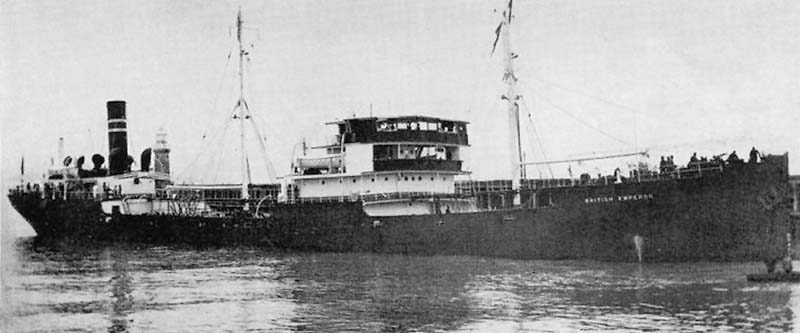
1917- British Emperor – 3,637grt (above). On 7th May 1941 she was captured by the German raider Pinguin 300 miles off Socotra. A day later she was sunk by H.M.S. Cornwall, 341 crew and 200 prisoners lost.
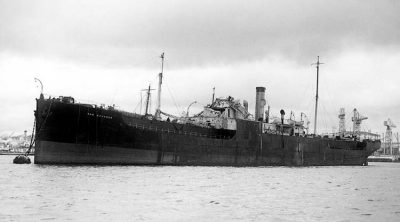
1917 – War Bahadur – 5,565grt. She was a Royal Fleet Auxiliary Oiler in 1919. She suffered severe storm damage in the North Atlantic in 1938 (above), and reduced to a fuelling hulk in Devonport. She was broken up at Blyth in 1946. Photo: Photoship
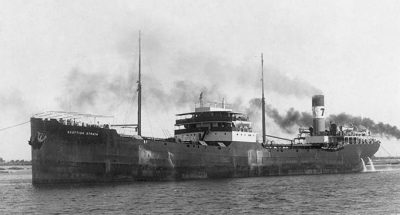
1922 – Scottish Strath – 7,417grt (above). In 1937 she was sold to Norway and renamed Marit II. On 13th September 1946 she broke in two and sank during a hurricane when en route from Curacao to New York.
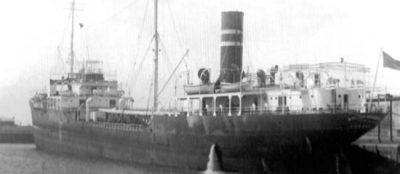
1927 – British Progress – 4,581grt (above). She was attacked by German E-boats on 4th November 1943 when on a passage from Thames Haven to Grangemouth. She was towed to the Tyne, condemned and broken up at Rosyth the following year.
Vickers Armstrong
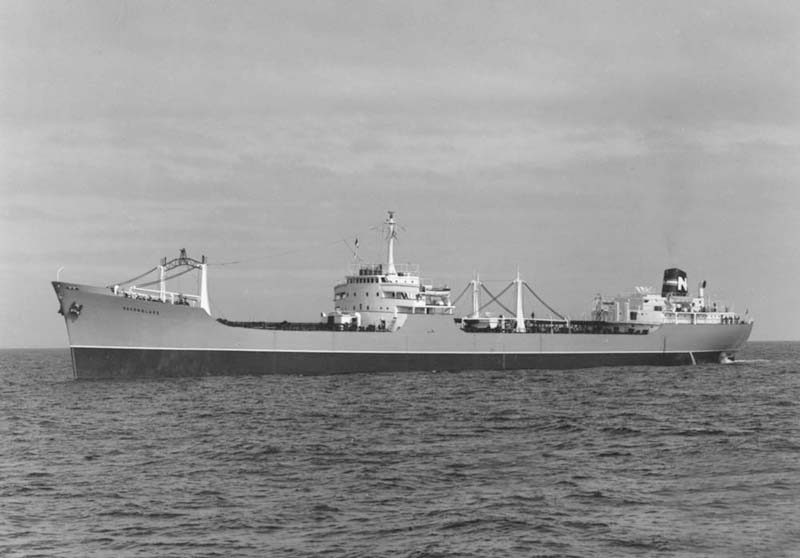
1952 – Saxonglade – 20,450dwt (above). One of 4 tankers built for Niarchos. In 1962 all 4 were converted to 28,000dwt bulk carriers having had their tank length replaced with new mid-bodies built by the same yard. She was broken up at Kaohsiung in 1978.

1954 – World Harmony – 33,040dwt (above). On 14th December 1960 transitting the Bosphorus heading for Novorossiysk in ballast, she collided with a Yugoslav tanker Petar Zoranic (17,839dwt/1960) which was fully laden with benzine and petrol en route from Tuapse to Hamburg. Fire broke out and both ships were locked together and came into collision with a Turkish cargo passenger ship Tarsus (9,359grt/1940) which was carrying 465 passengers. She was also set on fire and the disaster cost 50 lives.
1958 – Esso Durham – 36,000dwt (above). Having just entered the Mediterranean in January 1961, she was tank cleaning when a vast explosion blew the ship’s sides away in No. 4 tank. She was towed into Gibraltar, cut in two and repaired at Cadiz, with increased tank capacity and superstructures. She was sold in 1971 and broken up at Kaohsiung 4 years later. Photo: Fotoflite
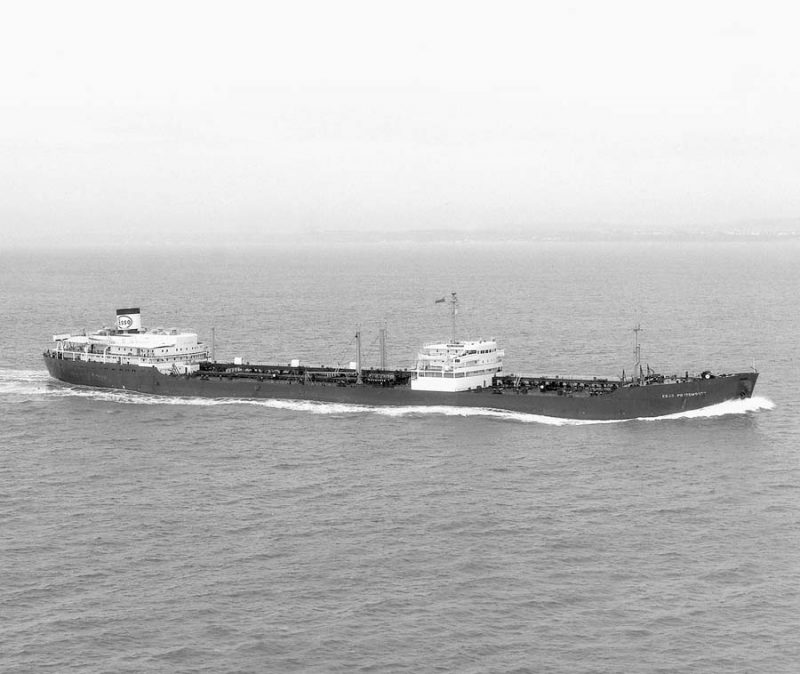
1959 – Esso Portsmouth – 36,000dwt (above). In July 1960 she was the first tanker to discharge at Milford Haven, where she blew up, destroying the entire tanks structure. The ship was towed to the Tyne for a new larger tank range and superstructure, increasing her capacity to 38,500dwt. She re-emerged in December 1961. She was sold to Panamanians in 1972, ran aground in January 1975 and declared a CTL. She sank in tow in August 1975. Photo: Fotoflite
1961 – Serenia –67,850dwt (above). The largest tanker to be built on the river at the time. She spent most of her early career in Far Eastern waters, before being converted in 1977 to a North Sea oil shuttle tanker for her last 10 years of service before she was broken up at Kaohsiung. Photo: Fotoflite
Palmers
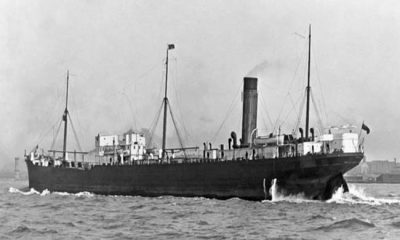
1903 – Graf Stroganoff – 7,025grt (above). Originally built for owners in St. Petersburg, by 1940 she was run by Italians. She was attacked by the French cruiser Jean d’Arc in June 1940, near Lake Maracaibo, beached, repaired and passed onto the U.S. Navy. She was broken up at Richmond in 1947.
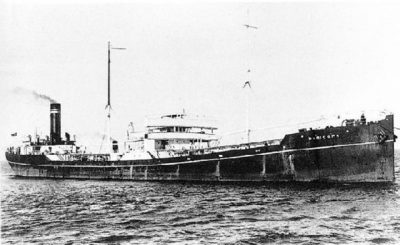
1912 – Maricopa – 6,960grt (above). Built for Wilh. Wilhelmsen. She was sold in 1929 and converted into a whale factory ship. She sank when under repair on the Tyne following an explosion. In 1953 she reverted to carrying oil, but was abandoned north west of Oporto in January 1957.
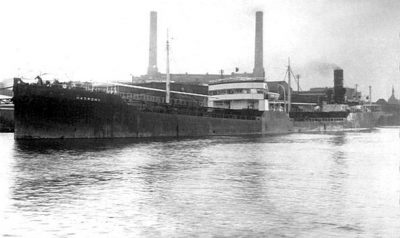
1916 – Madrono – 5,854grt (above). Built for H. E. Moss, passing to Norwegians after WWI. In July 1942 she was captured by the German auxiliary cruiser Thor in the Indian Ocean and taken to Japan. In May 1944 she was sunk by the U.S. submarine Burrfish.
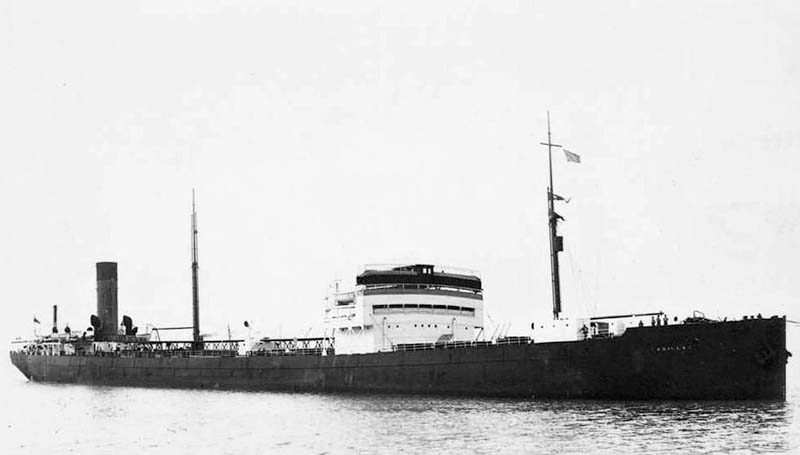
1917 – Cadillac – 11,106grt (above). Built for Anglo-American Oil Co. Ltd. It is notable that by 1930 the tanks were so badly corroded from carrying benzol and petrol (before the days of tank coatings), she had to return to the builder to have a new tank range fitted. She was sunk by U-552 in March 1941 with the loss of 35 lives.
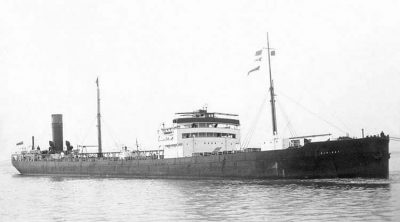
1918 – Saranac – 12,070grt (above). Sister of Cadillac. She too needed a new tank range due to corrosion. She was sunk by U-51 in June 1940 with the loss of 4 crew.
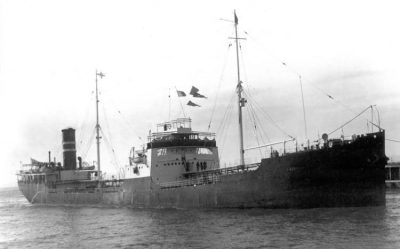
1928 – British Freedom – 10,440dwt (above). In June 1942 she was torpedoed on her way to Newport News and survived, but in January 1945 she was sunk by U-1232 as she queued up to enter Halifax (NS). Photo: Photoship
1928 – British Loyalty – 10,440dwt. In May 1942 she was sunk by a Japanese midget submarine at Diego Suarez. She was repaired becoming a bunker vessel at Addu Atoll. In March 1944 she was sunk again by the German U-183, repaired and used as a hulk, being scuttled there in 1946.
1928 – Creole Bueno – One of three 3,126 grt tankers for Venezuela. In September 1948 she exploded and sank after a lightning strike when moored at Campana.
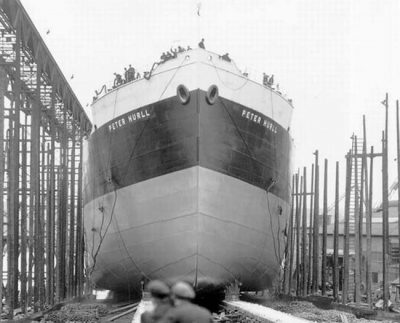
1930 – Peter Hurll – 12,043grt (above). In 1948 she was sold to the Danish subsidiary of Esso, broken up at Odense in 1963, with her fore end rebuilt to make a cable and pipe laying barge for North Sea operations. Photo: Photoship
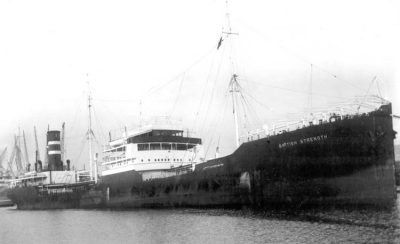
1930 – British Strength – 11,095dwt (above). The last ship to built by this famous company. In March 1941 when in ballast for Aruba she was sunk by the German battleship Scharnhorst. Photo: Photoship
Tyne Iron
1914 – Elbruz – 4,881grt. She was built for owners from Antwerp. She was scuttled at Novorossiysk in 1918 to avoid capture by German forces. She was raised and rebuilt. However the ship was torpedoed by German aircraft in the Black Sea in 1942.
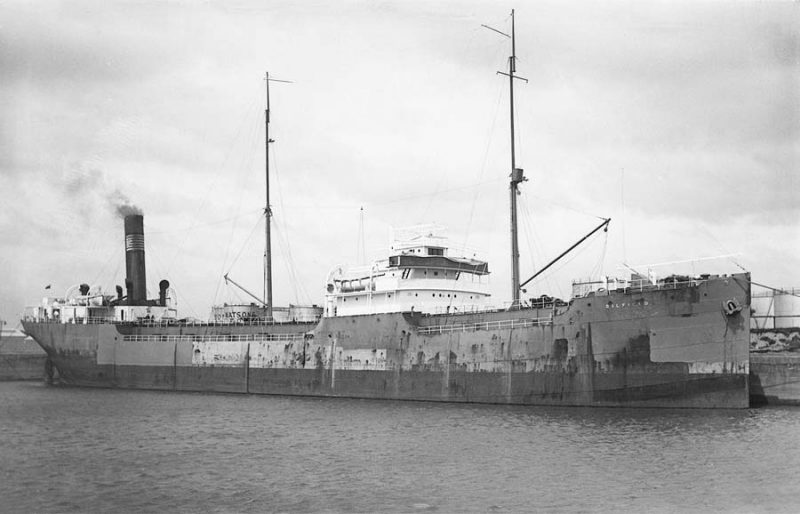
1923 – Oilfield – 5,387grt (above). One of Hunting’s tankers, she was sold in 1937 to Townsend Brothers and used for embargo breaking to Spain. In 1938 she was damaged by Nationalist aircraft when lying at Alicante. She was refloated and served Spanish owners until 1967 when she was broken up at Castellon. Photo: Photoship
Hawthorn Leslie
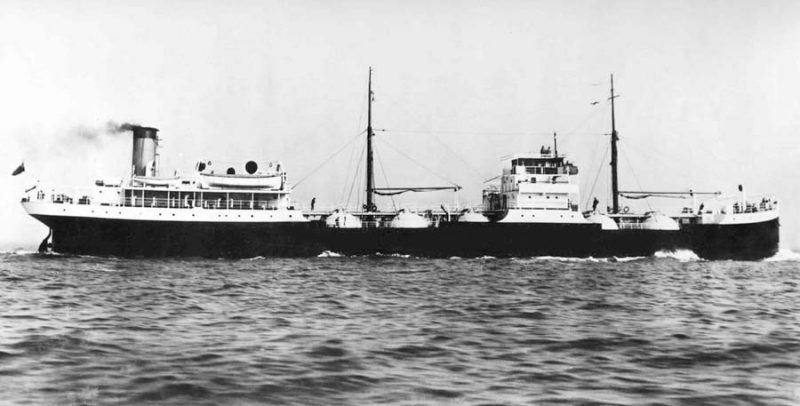
1931 – Agnita – 3,561grt (above). The world’s first gas tanker, built for Anglo Saxon. She was sunk when in ballast by the German raider Kormoran in the South Atlantic in March 1941. Photo: Photoship
1948 – Auris – 12,290dwt (above). She was notable for her gas turbine machinery, which proved to be un-economical and she was re-engined in 1959. She was broken up at Blyth in 1962. Photo: Fotoflite
1963 – British Dragoon – 52,928dwt (above). She was the largest ship to be built at Hebburn and was broken up at Gadani Beach in 1982. Photo: Fotoflite
1966 – Clerk-Maxwell – 9,055dwt (above). The start of a new generation of liquefied gas carriers, she was managed by Houlders. She was broken up in Spain in 1986. Photo: Fotoflite
Swan Hunter
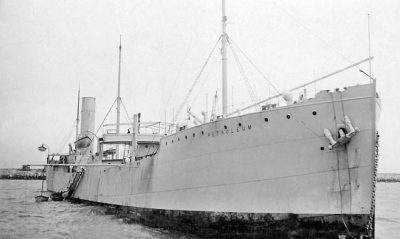
1903 – Petroleum – 4,686grt (above). The first ship to trial RAS techniques for re-fuelling warships at sea. Over 30 other tankers would follow for the RFA, ending with the Fort George of 1993. She was broken up at Inverkeithing in 1937.
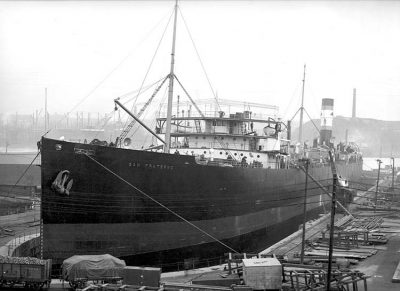
1913 – San Fraterno – 9,587 grt (above). 15,700 dwt. She sank after striking rocks in the Strait of Magellan in 1927.
1918 – British Star – 6,688grt. When serving the RFA as the Olynthus in the South Atlantic during WWII, she received the famous signal, “If Graf Spee comes your way let her through”! After serving Italian interests she was broken up at Savona in 1960.
1950 – Velutina – 28,220dwt (above). She was the largest tanker built in Britain at the time of her Royal launch. She was eventually converted by Hereema into the North Sea crane barge Champion. Photo: Fotoflite
1953 – Helix – 17,892dwt (above). She was the first of the 59 ship class for Shell-Eagle Group. In 1962 she was transferred to the Dutch partner as the Kossmatella, and broken up in China in 1972. Photo: Fotoflite
1958 – British Architect – 35,672dwt (above). One of a breed of tanker with streamlined superstructures. In June 1970 when on passage from Chiba to the Gulf she was hit by lightning which caused an explosion in a midship tank. The upper deck was curled back over the midship superstructure. She was repaired and broken up at Dalmuir in 1975. Photo: Fotoflite
1967 – Narica – 113,4840dwt (above). One of 2 ships built at Wallsend for the German subsidiary of Shell to offset the cost of the British Army in the Rhine! She was broken up at Chittagong in 1993. Photo: Fotoflite
1970 – Esso Northumbria – 250,262dwt (above). The first of 8 tankers to be built by Swan Hunter. The global recession following Middle Eastern wars and the oil price hike, led to worldwide tanker scrappings. This one lasted until 1982 when she was broken up at Kaohsiung. Photo: Fotoflite
1975 – Yorkshire – 112,744dwt (above). One of the ill-fated multi-ship Swan Maritime contracts, built in two halves, in different shipyards for a quicker completion time. In 1989 she was attacked by Iranian warships at Sharjar, and set on fire. She was broken up at Alang in 1993. Photo: Fotoflite

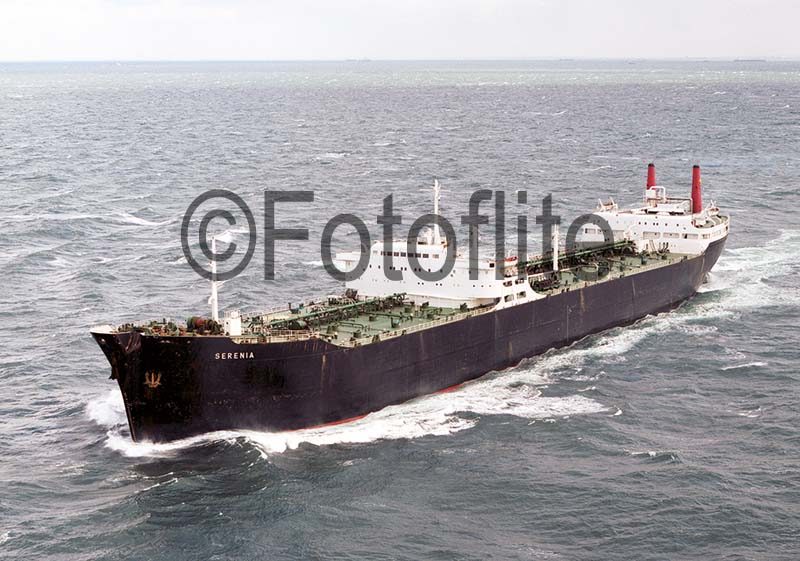
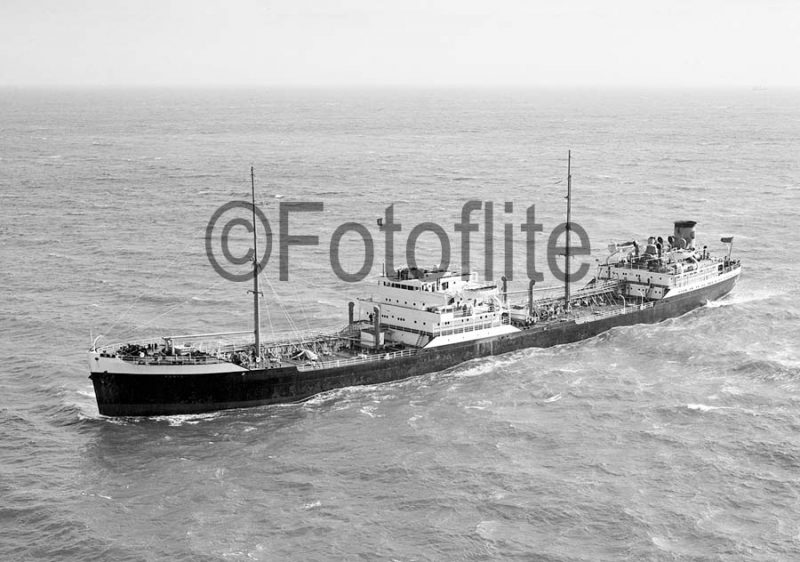
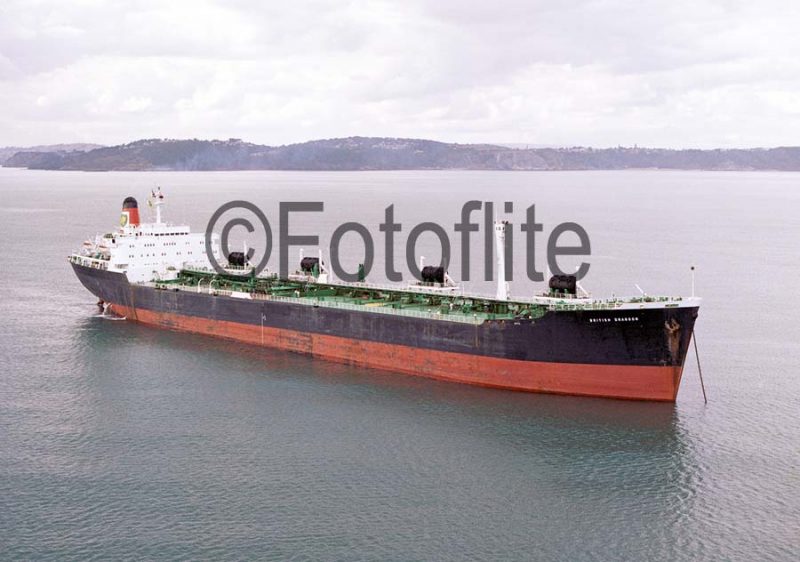
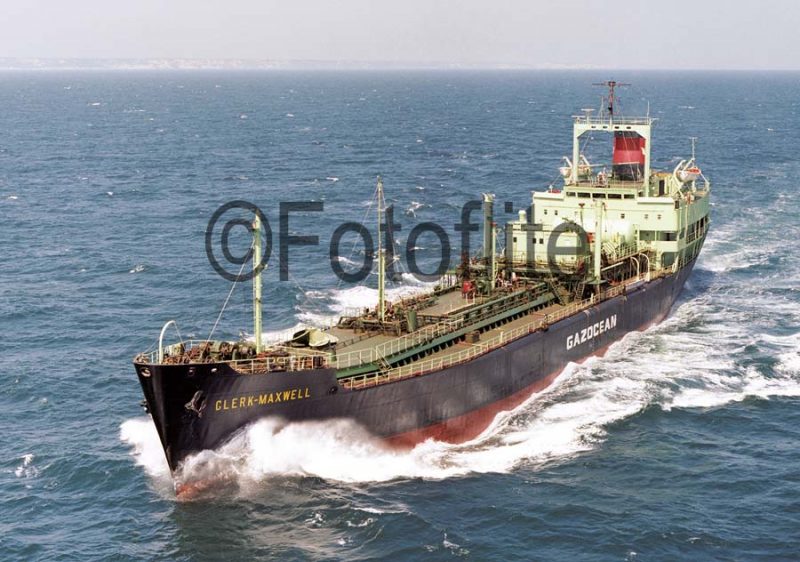
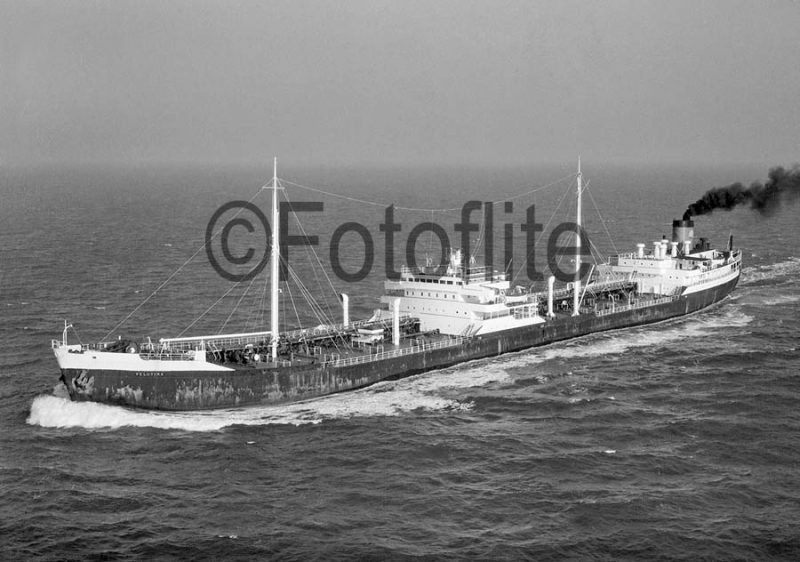
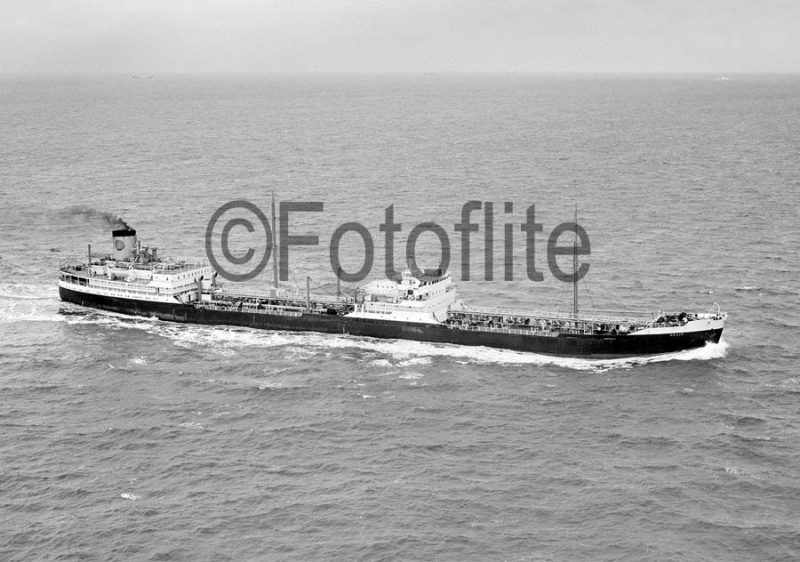
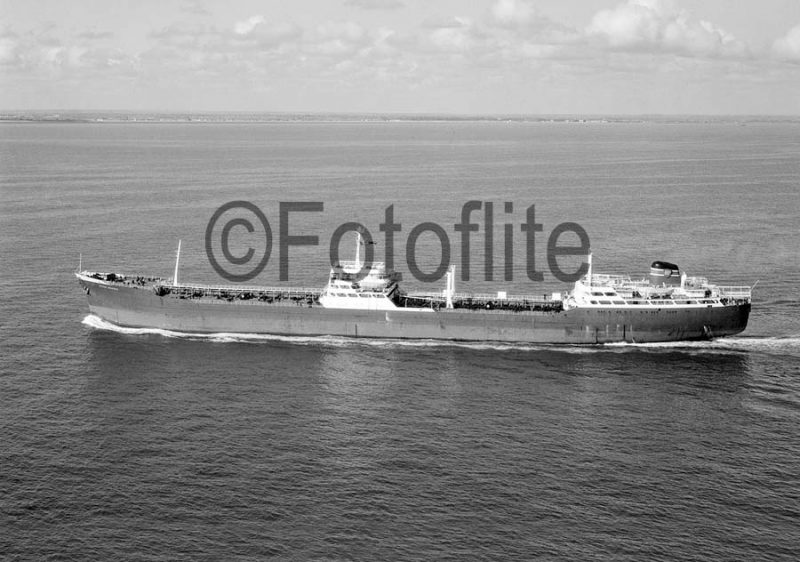
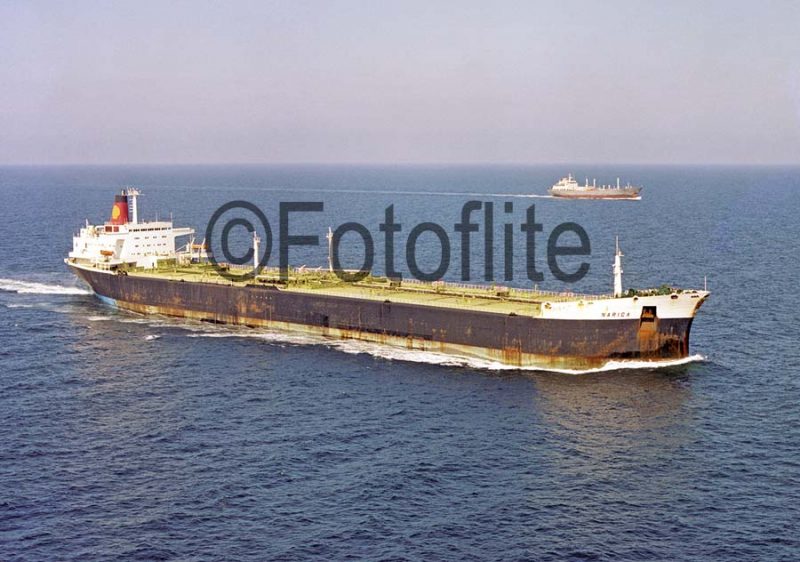
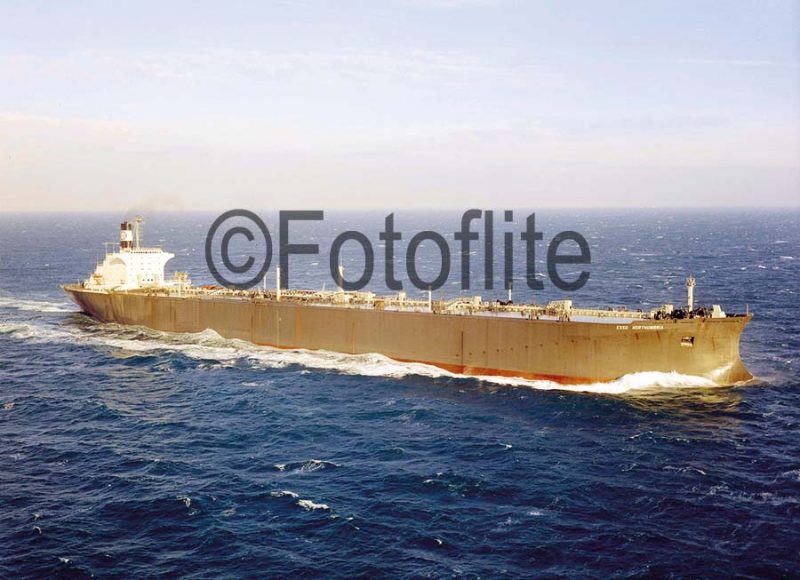
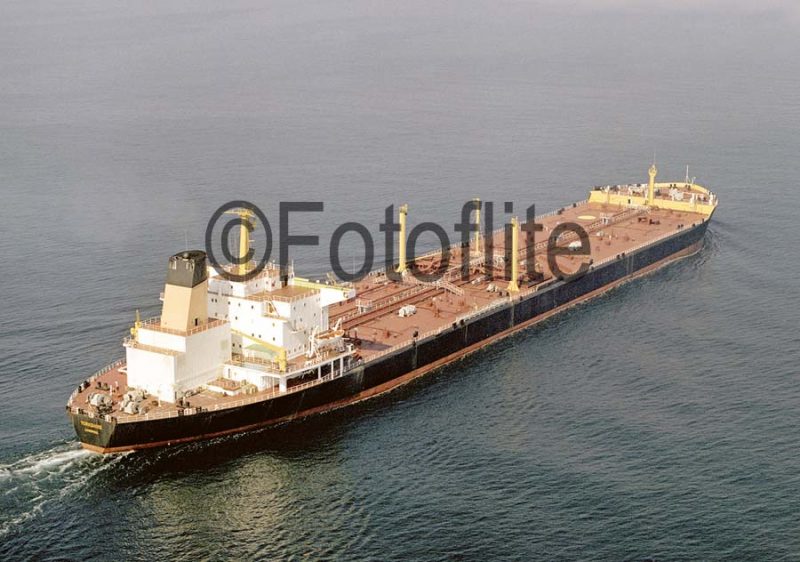
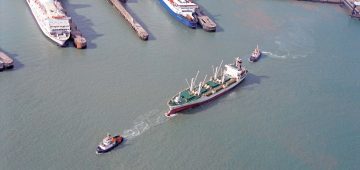
Comments
Sorry, comments are closed for this item